 
Leach Push-Out System
For Standard Packmaster and 2-R Packmaster
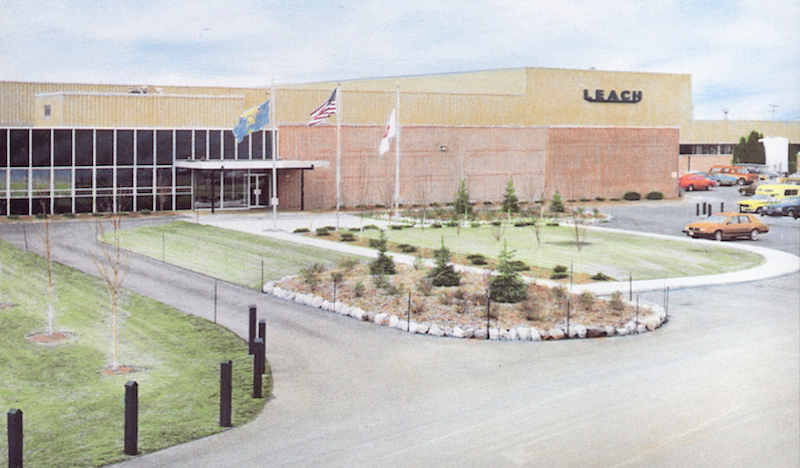
Main entrance to the Leach factory, which went online in February, 1962
Leach Company moved to a new factory in February of 1962. Constructed on farmland annexed by the City of Oshkosh, the 205,000 square foot facility consolidated all Leach operations under one very large roof. Thirty years earlier, in the depths of the Great Depression, Elgin had sold a handful of the new Leach Garbage Getter bodies. By the end of 1962, the first year at the new factory, 1,309 refuse bodies were sold. There was also a very big technical change being applied to the Leach product line beginning that year.
During 1962-63, The Leach Push-Out debuted, a trademarked name for Leach's new ejection system being fitted to the Packmaster and 2-R bodies. Leach, and the other rear loader manufacturers had in fact been bested by the Heil Company, which in 1960 had come out with the Duo-Press compaction-ejection system on their new Colectomatic Mark II. While the 1946 Sicard Sanivan had actually been first, the new Heil system not only ejected the load but helped to maintain high compaction all throughout the loading process. It was clear that in the future, no tilt-dump rear loader would be able to compete with this method.
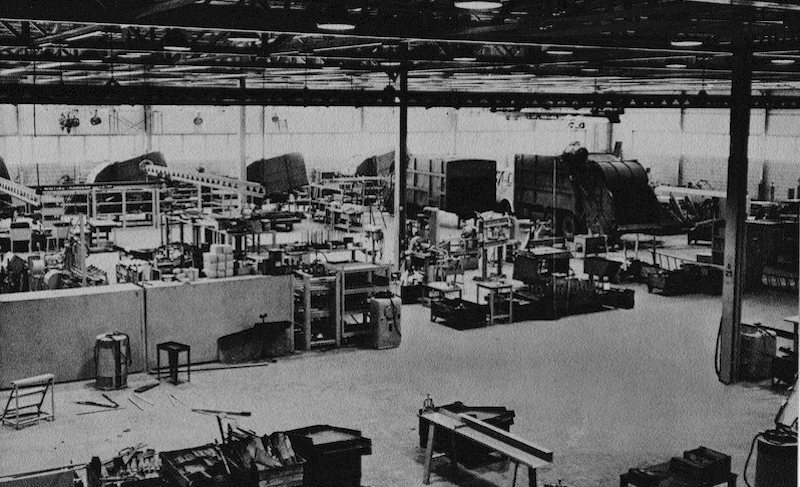
1962 Photos shows new assembly shop building tilt-dump Packmasters alongside 2-R Pushouts
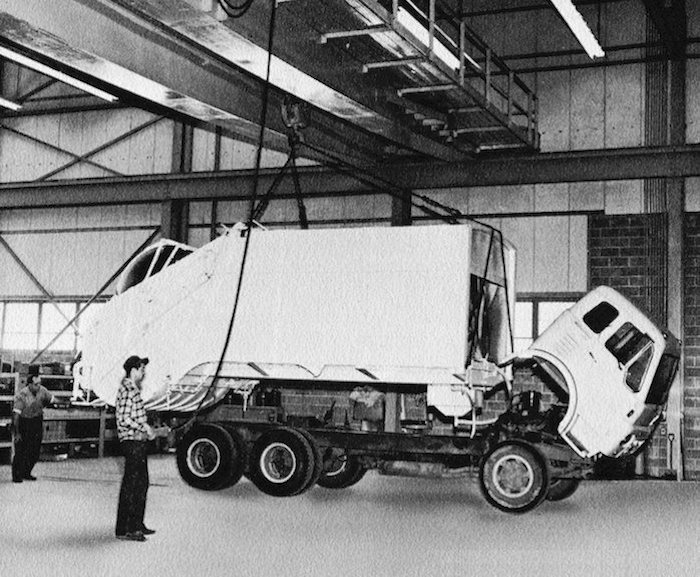
Mounting a 2-R Pushout body on an International C0 tilt-cab chassis
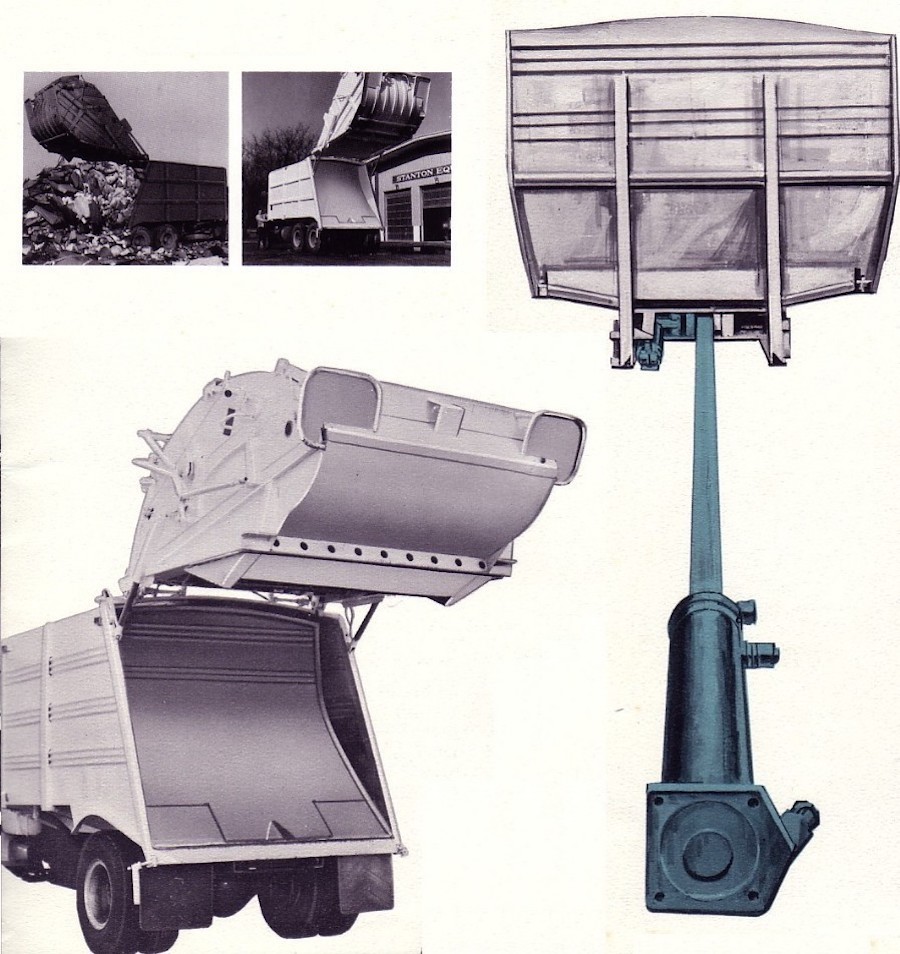
The Push-Out system eliminated hazardous tilt-dump method previously used on Leach rear loaders
The new Leach Push-Out system was significantly different from Heil, and virtually ever other ejection rear loader that followed. Whereas Heil had opted to use a multiple stage telescopic cylinder to move the ejector in one stroke, Leach used a common single stage cylinder to move the blade in stages. The rod end of the ejector cylinder was welded to a heavy bar which ran the length of the body. The ejector blade was alternately clamped to and released from the bar during multiple cycles of the cylinder to eject the load.
For example, with the body full, the push-out cylinder retracted and the push-out plate fully forward in the body;
(1) The operator moved a lever to extend the push-out cylinder which moved the push-out bar rearward. The push-out plate is clamped to the bar by a small hydraulic cylinder located in its base, and is forced rearward and begins ejecting the load.
(2) Once the maximum stroke of the push-out cylinder was reached, the operator reversed the lever thereby pulling the cylinder and bar forward again. Only now, the clamp is released, which allows the push-out plate to remain in its rearward position as the bar is withdrawn from underneath.
(3) The operator then repeats the first step, and the clamp is locked to its new forward position on the bar as it once gain extends rearward. At the end of the stroke, the cylinder is again retracted with the clamp released. By repeating this process a few times, the load is fully ejected.
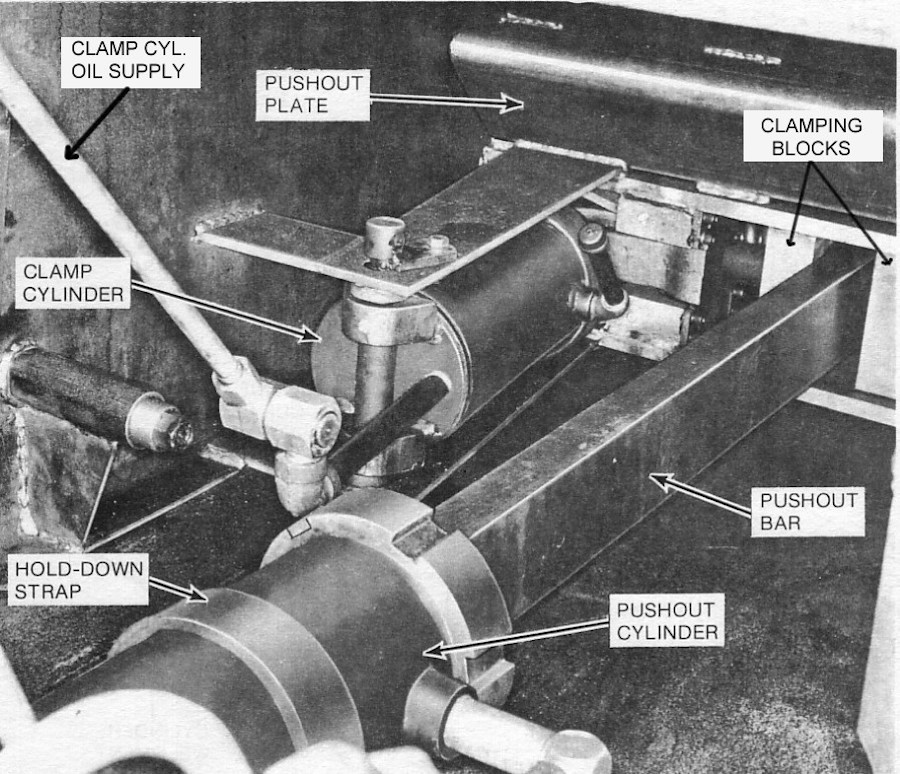
Components of the Push-Out system as viewed through the front opening of the body
The push-out cylinder is a double-acting ram, which means that it may be retracted or extended under full hydraulic power in two directions. The clamp cylinder was a single acting ram. That is to say it operates under power in a single direction, to extend the ram and lock the clamps to the push-out bar. To release the clamps, the oil line to ram is opened, allowing the fluid to escape while a heavy spring forces the clamp blocks open. Operation of the clamping cylinder was automatic, controlled simultaneously by the movement of the pushout lever.
This system allowed Leach to use a relatively inexpensive and common hydraulic cylinder to do the work of a telescopic ram. Telescopic rams had the advantage of a long, continuous stroke, but were costlier to produce and repair. Each stage of the telescopic ram has a seal, which may potentially fail and leak oil, compared to only one seal on the standard double-acting ram. Of course, Leach had to supply oil to the clamping cylinder, which was affixed to the movable push-out plate. This was done on early models with a swivel-jointed hydraulic line, which folded up as the plate was pushed forward. Later models simply used a flexible hose suspended by a spring from the inside of the body.
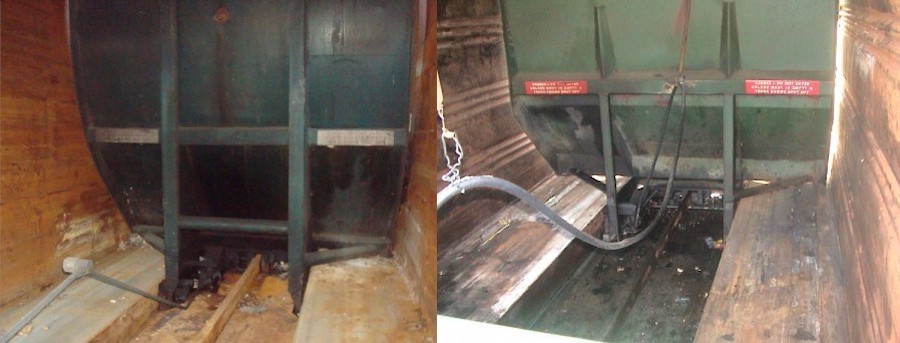
At left, a 2-R body with the original style metal line to the clamp cylinder. At right, a later-model Standard Packmaster body with the flexible hose
Both the Packmaster and 2-R tailgates remained unchanged, except for the tailgate lift cylinders which were moved from their traditional location inside the body, to the outside of the tailgate on the upper side walls. The bodies were completely different, with the 2-R receiving heavy horizontal and vertical bracing, while the Packmaster got only the heavy vertical braces, and a lighter treatment on the horizontal stiffeners. Both bodies featured a fully open front, which not only made for easy service access, but also allowed the operator to easily see the position of the blade.
The Push-Out system lasted well into the 1980s on all Leach rear loaders. It was a novel system, and did the job it was intended to do, but it did have its drawbacks. Ejection of the load was slower, since it had to be done with several cycles. Compaction of the load depended on the operator properly manipulating the Push-Out plate throughout the loading process. The system was designed so that the operator periodically extended the ejector plate during the last stage of the packing cycle to crush the load in a 'compaction vice'. This is sometimes referred to as 'back-packing', and the density of load could be affected by the skill of the operator at the controls.
The big double-acting Push-Out ram was robust and well suited to the job, and was cheaper to maintain, but other parts of the system were prone to wear, namely the bar and the clamping mechanism. By the early 1990s, Leach was offering telescopic ejection on the 2-R, and eventually did away with the Push-Out system across the majority of the product line. A small number of 1990s Standard Packmasters were the last models to use the original system.
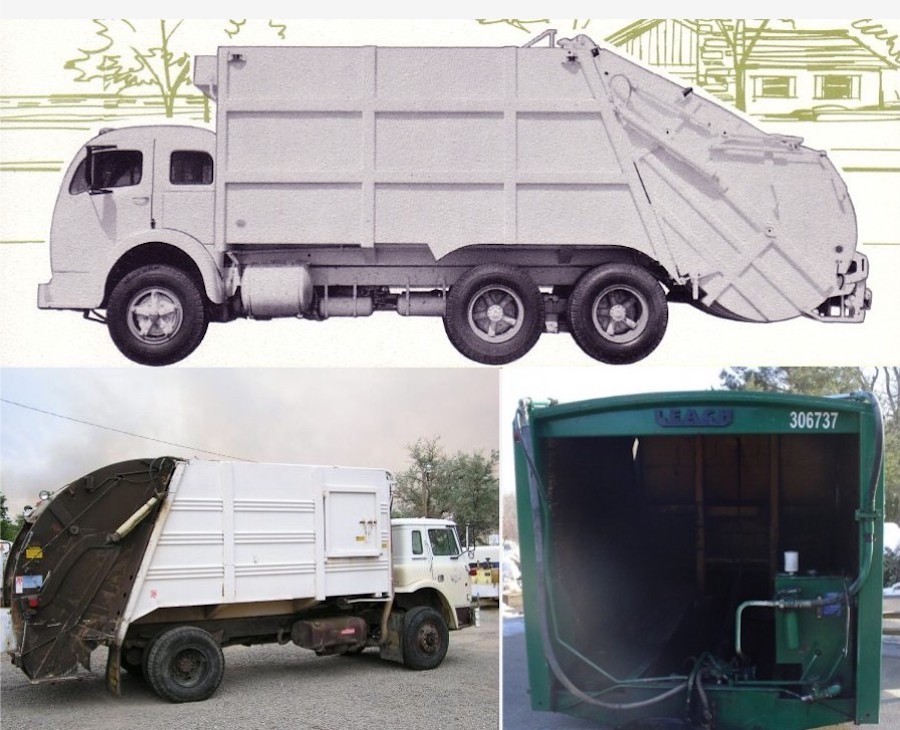
Leach Push-Out bodies are easily spotted by heavier bracing than earlier tilt-dump models. The high compaction 2-R (top photo) got a heavier treatment than the Packmaster (lower left). Side service doors were optional on either model, but were often un-necessary because all bodies had open fronts. The 2-R bodies could have oil tank mounted above the front opening, or in either the bottom left or right corner as shown in the green body above. Packmaster oil tanks were almost always in the lower position.
|
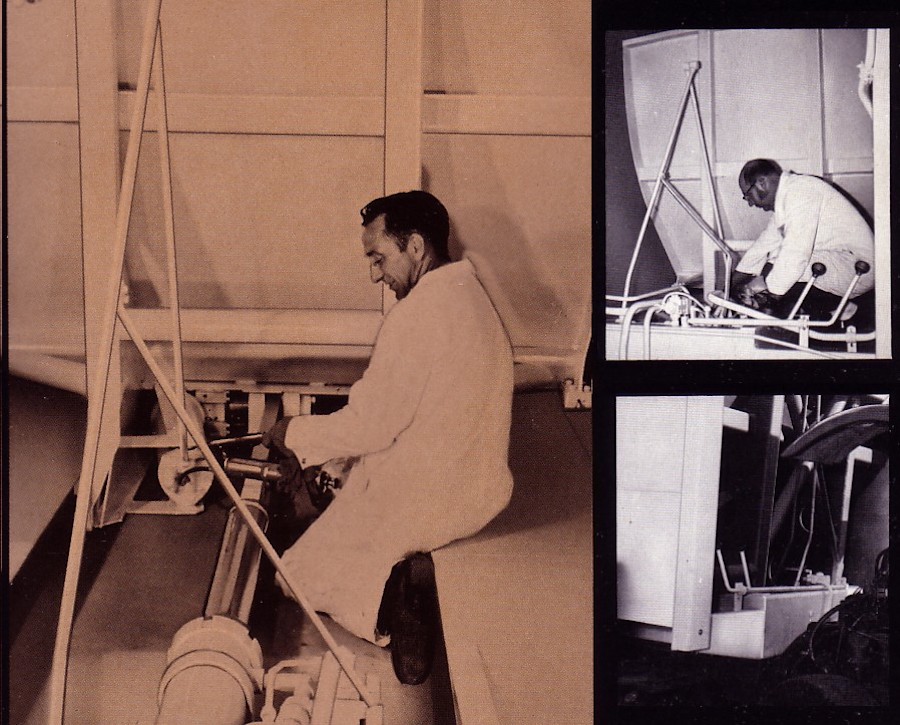 The open front end provided easy access and ample lighting for regular maintenance and cleaning
The open front end provided easy access and ample lighting for regular maintenance and cleaning
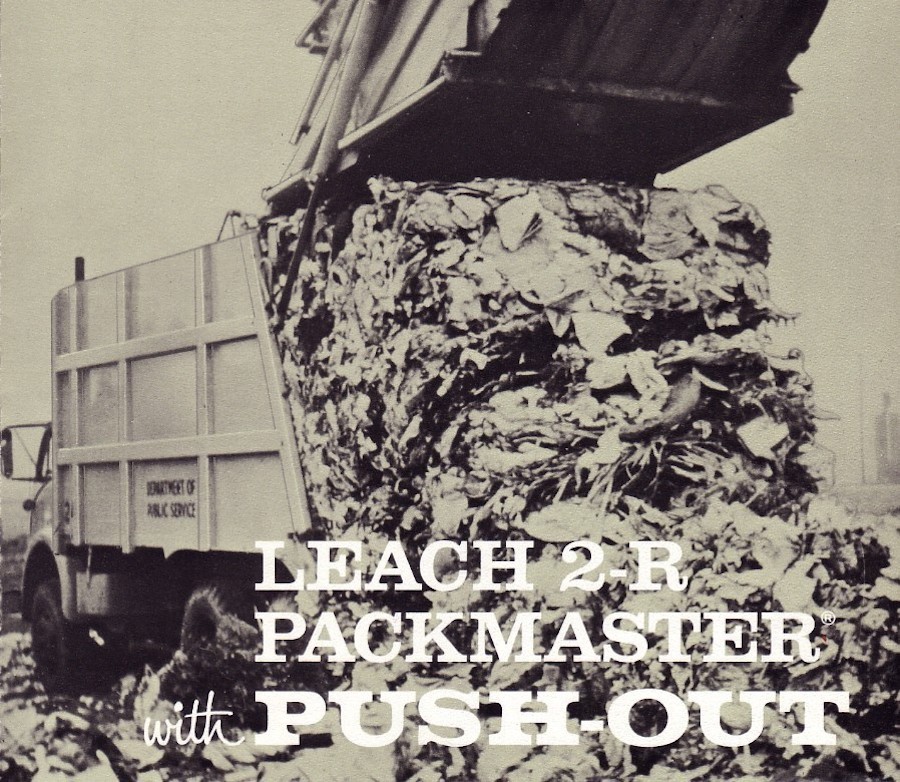
An early 2-R ejecting its load



10/4/09
© 2009
All Rights Reserved
Photos from factory brochures/advertisements except as noted
Logos shown are the trademarks of respective manufacturers
|
|